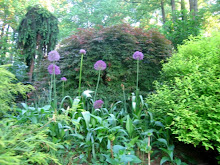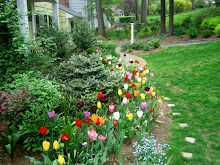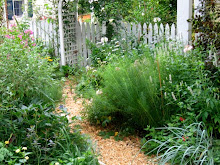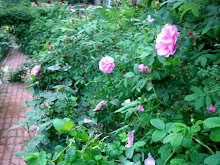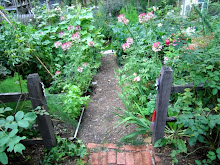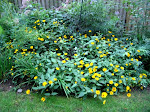 One of my goals as a gardener is to have year-round color. I'm editing the Long Border for fall color now. I originally conceived of this border being at its peak in the fall, but not without interest during the rest of the year.
One of my goals as a gardener is to have year-round color. I'm editing the Long Border for fall color now. I originally conceived of this border being at its peak in the fall, but not without interest during the rest of the year.
The first half of the Long Border looks great: the miscanthus grass provides movement; Salvia Black and Blue is weaving itself in and out; willow leaf sunflower, monarda, cimifuga, calamintha nepeta, and asters are all working. The second half is limping by: the false sunflower, two vitex, and an unremarkable grass all have to go.
For next fall, here are some plants that look great right now either in other parts of my garden or in others' gardens that I admire: Japanese anemone; turtlehead chelone; aster tataricus "Jindai" (can spread aggresively recommended that it's divided every three years); perovskia; boltonia; viburnum nudum; toadlily; monkshood; tall annual salvias (blooming now until the frost, including salvia 'Phyllis Fancy' and salvia splendens 'Van Houttie'); Geranium 'Roxanne'; red hot pokers; hardy chrysanthemums; clematis tibetana; Nippon daisy (is wonderful, but needs to be cut back hard so as to not flop before they flower); and/or hydrangeas (two with beautiful fall color are 'Preziosa' and 'Lady in Red').
 Keeping In: Salvia Black and Blue.
Keeping In: Salvia Black and Blue. Keeping In: Monarda.
Keeping In: Monarda. Keeping In: Cimifuga.
Keeping In: Cimifuga. Keeping In: Asters.
Keeping In: Asters. Taking Out: False Sunflower.
Taking Out: False Sunflower.
Maybe Next Year: Japanese Anemone (currently in the Front Border).
 Maybe Next Year: Hardy Chrysanthemums (currently in the Egg Garden).
Maybe Next Year: Hardy Chrysanthemums (currently in the Egg Garden).






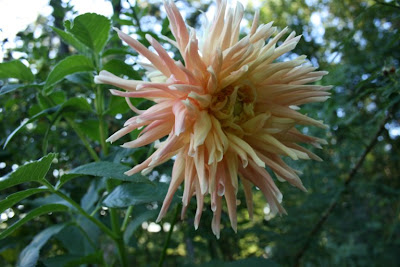 Arab Queen.
Arab Queen.


















